Social Mobile Manipulator
Navigation of a Mobile Manipulator considering presence of humans.
My current Master’s thesis focuses on Social Navigation for Mobile Manipulators.
Experiment videos: EXP1, EXP2, EXP3.
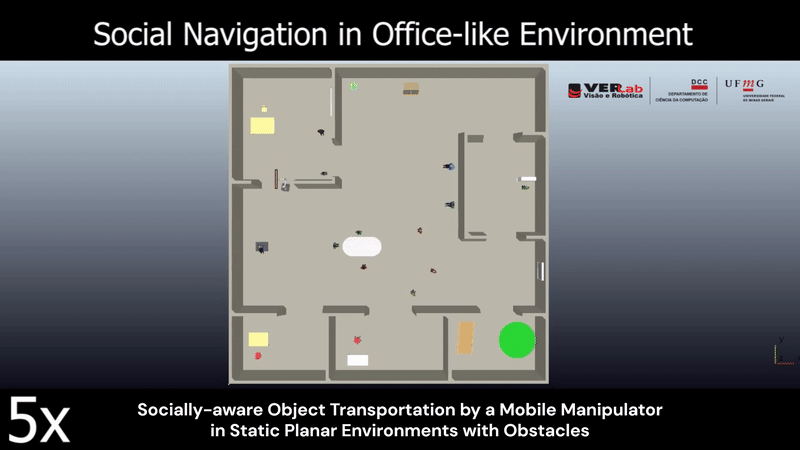
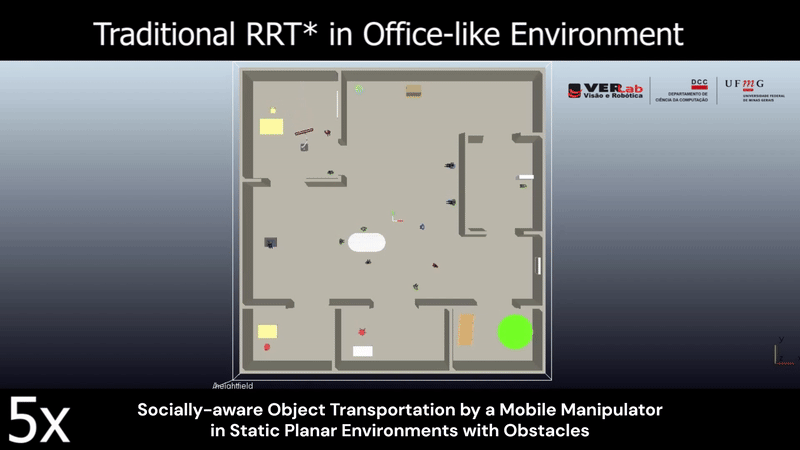
Simulation of a mobile manipulator transporting a bar-like object in an office-like environment.
Consider mobile manipulators as robots consisting of a mobile base and one or more robotic arms. In this research, we address the challenge of navigating a mobile manipulator transporting an object through environments with humans, aiming to minimize the discomfort that humans may experience.
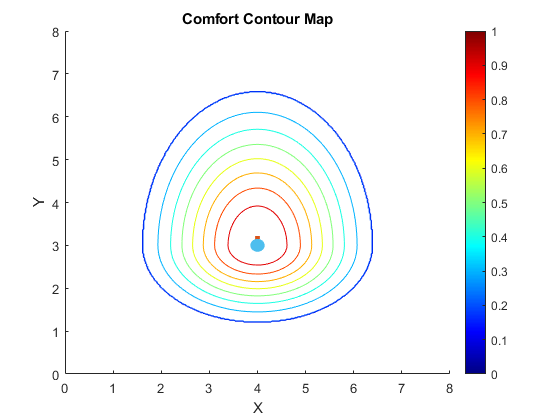
Contour Comfort Map visualization. The blue dot at (3,4) represents the human's position. Higher values indicate lower comfort levels.
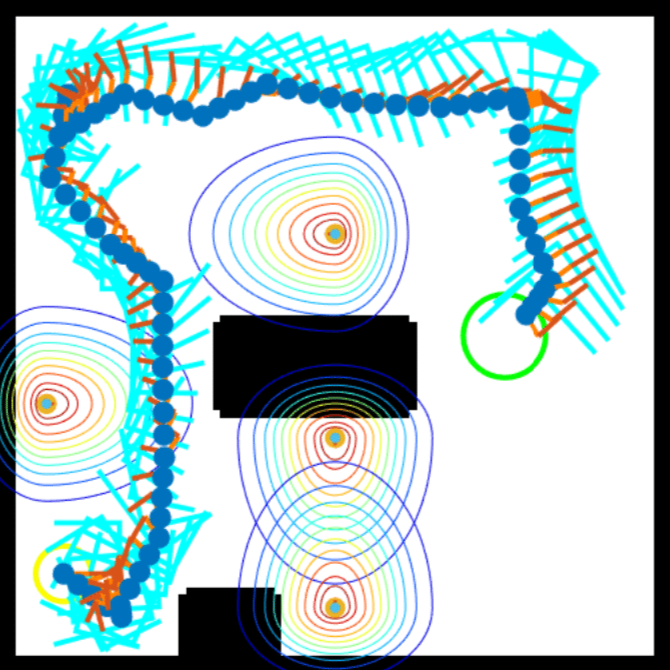
Socially-aware mobile manipulator transporting an object (ours).
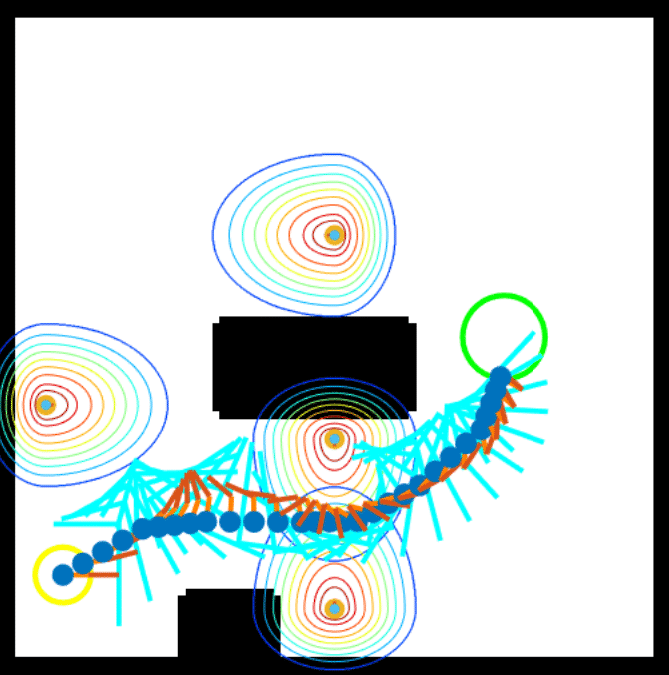
Not-social mobile manipulator transporting an object (RRT*).
To solve the problem in a static environment (people do not move), we employ a Risk-RRT*-based algorithm that considers personal spaces given by Kirby. We succesfully tested our developed algorithm in several environments, partial results can be read here.
Currently, we are extending the work in three branches:
- Compare Risk-RRT* with a Reinforcement Learning Approach;
- Online algorithm for 2D environments, where people move;
- Extend to 3D environments.